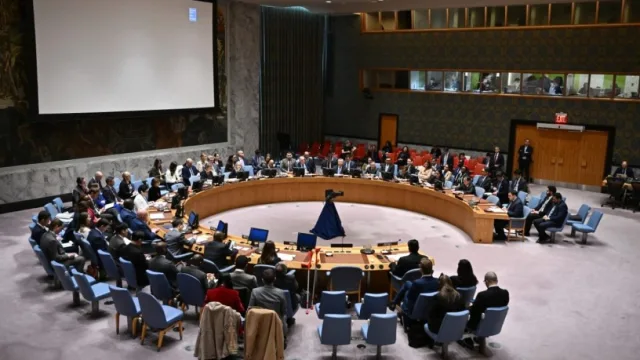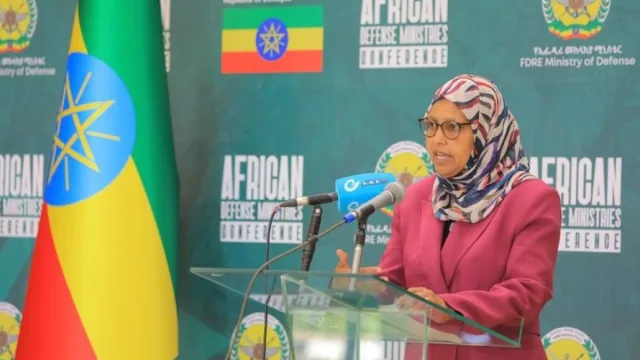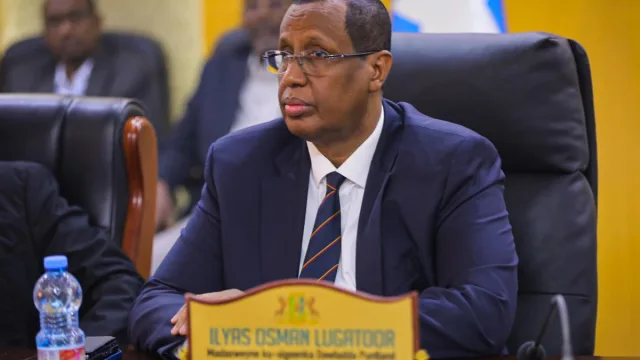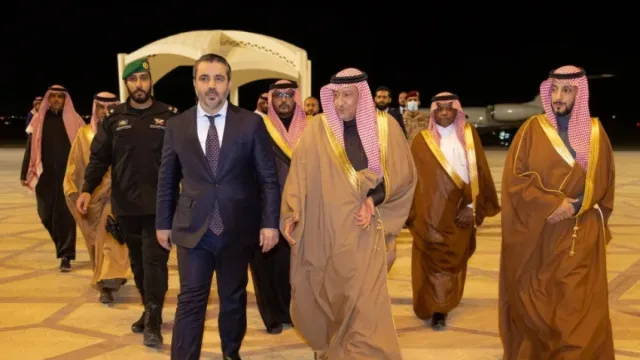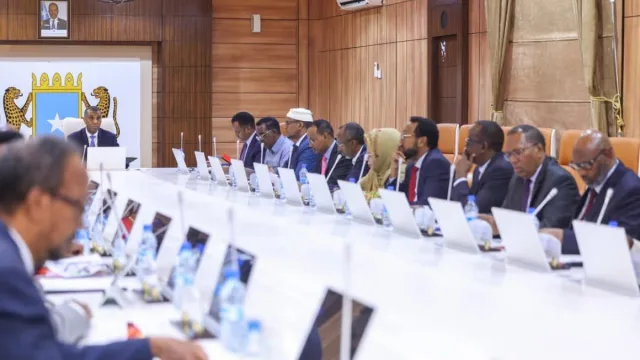Operation Eagle, the latest attempt by Somalia and the African Union to drive out al-Shabaab Islamic…

Operation Eagle, the latest attempt by Somalia and the African Union to drive out al-Shabaab Islamic militants, has enjoyed early success. But will there be anyone to fill the vacuum once the militants have gone?
The enemy is nowhere to be seen, but their presence is everywhere.
The soldiers I’m with are vigilant, either gazing fixedly ahead or peering uneasily into buildings.
Most shops here in Qoryooley, a town seized in late March from al-Shabaab, an al Qaeda affiliate, are closed, except for along the main dirt road where locals sit in the shade of the buildings. The occasional donkey cart carrying water weaves in and out between the African Union soldiers that line both sides of the narrow streets during a morning foot patrol.
Some civilians stand on tiptoe, reaching out to receive green apples, which are passed from the armoured personnel carriers. Shopkeepers lean uneasily in their doorways, barely registering the clanking tanks rolling through their town.
The capture of Qoryooley, in Lower Shabelle, is being trumpeted as a key victory for Operation Eagle, in this, the most recent offensive against the Islamic insurgents. The town is an access point to the port city of Baraawe, which is 70 kilometres away and one of al-Shabaab’s few remaining sources of revenue.
The African Union force, known as AMISOM, is bankrolled mainly by Western powers. Ahead of this offensive, which began in February, there was a ‘troop surge’ – with soldier numbers bolstered to over 22,000, from around 18,000 previously.
Operation Eagle is the first major joint military operation between the African Union and the Somali National Army (SNA). The aim is to seize control of al-Shabaab’s few remaining urban centres and consolidate the authority of the federal government.
Security vacuum
But as the African Union troops make progress on the ground, big doubts surround the ability of Somalia’s army and government to fill the resulting security and humanitarian vacuum once they have left.
Although al Shabaab no longer has a visible presence in Qoryooley, people are still within the orbit of the militant group, which retains a significant force just a few kilometres away and about which there is little concrete intelligence.
The fertile rural parts of Lower Shabelle are ideal for farming. The area supplies food for larger cities. But the offensive – and al-Shabaab’s resistance – obviously creates problems for local farmers.
“They have made our homes their defensive lines. We are poor people – farmers and cattle herders. We have been hit by bombs,” says local farmer Jibril Abdi.
But Jibril has been fortunate, in some respects. Others have lost their crops to the flooding of roads and fields, a deliberate al Shabaab tactic to slow the movement of African Union troops. The insurgents use canal locks to divert the Shabelle River, making roads impassable, according to the Ugandans.
“Whenever they discover our plan of cordoning off a nearby centre, they flood the road,” says Geoffrey Ongom, a captain in the African Union’s Ugandan contingent.
al-Shabaab also controls major supply routes to the south, blocking civilian movement in and out of African Union held territory and stopping farmers and traders from transporting their goods.
Somalia’s army – untrained and unprepared
On top of the challenges that the enemy presents, the Somali National Army (SNA) is struggling with other issues. While some have been trained under the guidance of the European Union, most have not received any formal instruction, but are still sent to the frontlines.
“We were told: ‘Fight al-Shabaab now,’” a wounded SNA soldier, Abdullaye Ali Halena, explains. “They told us ‘you will be given training and support later’.” These circumstances leave the soldiers demoralised and feed the impression that the national army is incapable of providing security to its citizens.
Poorly funded and infiltrated by al-Shabaab, Somalia’s army lacks military barracks, and there is no guarantee that the soldiers will see their monthly salary of $100.
“You leave 200 men somewhere and the next day there are only 20 left,” rues Ali Aden Humad, a spokesman for the African Union, referring to the Somali army.
Whilst the African Union force has been successful in removing al-Shabaab from most urban centres, the struggle against the insurgent group continues, even in Mogadishu. The militants were pushed out of the capital in August 2011, but the militants continue to pose a daily threat.
After the military offensive is over, it will become the responsibility of Somalia’s government to maintain security and to provide humanitarian assistance.
But all the signs here point to the African Union troops being required to provide more than a supporting role for a long time to come.
